Jennifer Colliau is one of Bay Area's greatest bartenders. To use words such as "smart," "talented," or "creative" seem to undermine her qualities. Rather, she is a force in the industry -- ambitious, yet down to earth; knowledgable, yet curious; confident, yet humble. Her mind is a sponge; she lights up when talking about cocktail history (she is a living encyclopedia of cocktails), or the most recent dinner recipes she's been working on in the kitchen (101 Easy Asian Recipes by Peter Meehand and Lucky Peach) or ice. Her mood will darken a bit when talking about the perils of service in the Bay Area dining community -- she has many opinions on this topic. In any case, she is a true joy to be around and I am happy to have met her early in our days of starting Umami Mart.
Launching her career in bartending in LA and finding her footing at Slanted Door in San Francisco, Jennifer then started Small Hand Foods, her syrup company which can now be found nation-wide. These days she is the Beverage Director at The Interval, the bar she opened inside the non-profit space The Long Now. The cocktail menu in itself is a work of art and should be the official bible for bartenders everywhere.
She just secured a space for her new bar/restaurant project in Uptown, Oakland, slated to open in 2018. Right down the street from Umami Mart, we are so excited!
As a part of our series celebrating women producers (or rather producers, who happen to be women), here's an interview with the lovely Jennifer Colliau, and a couple of her favorite recipes. Enjoy!
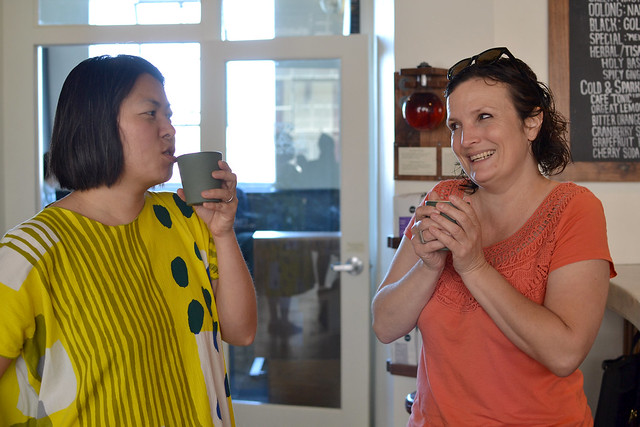
When did you start bartending and how? Where was it? And how long were you at your first bartending job?
My first bartending job was at an Irish pub in West Los Angeles called The Irish Times. It’s fantastic. If you go in tell James I say hi! I was there for maybe a year, and then I got a job through one of the regulars at a fancy Southwestern restaurant. We had about 80 different tequilas and mezcals, which in 1998 was pretty rare. I learned a ton, then vied for the Bar Manager position there, which I got.
Where did you really learn how to bartend and why?
I’m always learning! I went to bartending school in L.A. when I was 21, and while we learned a lot of crap drinks, I also learned how to accurately free pour, and how to make old man drinks like the Rusty Nail and Stinger, which come in handy during this craft cocktail revival we are in the midst of now. I learned to stir Martinis and Manhattans (rather than shake) while tending bar at Bucci’s in Emeryville, which is where I met Dale Degroff for the first time. I went from there to The Slanted Door, where my interest and education continued into cocktail history and pre-Prohibition era ingredients and execution.
At what point did the idea for Small Hand Foods arise? Was it while you were making a particular cocktail?
My bar manager at The Slanted Door was Erik Adkins. He and I talked a lot about historical drinks and their ingredients. In bartending school, I had learned a Mai Tai as two kinds of rum with pineapple juice, amaretto, and sweet & sour mix. We didn’t have amaretto at The Slanted Door, or any almond-flavored anything, so if someone ordered a Mai Tai we would just make them a mixture of rum and juice. To me, it’s the almond flavor that makes the drink. So I bitched about our recipe until Erik looked up the history. He said, “You’re right, it’s not amaretto, but it does call for an almond syrup called orgeat. Also, it doesn’t have pineapple juice in it!”
The Mai Tai was created in 1944 at the original Trader Vic’s in Oakland, and consists of rum, orgeat, lime juice, curaçao and a touch of cane syrup. None of the orgeat on the market was made from actual almonds, just flavorings and often high-fructose corn syrup and preservatives. We wanted to try what the Mai Tai originally tasted like, so I started making orgeat versions from every recipe I could get my hands on. Ultimately I hit on a method that worked well, and we started serving Mai Tais and Japanese Cocktails (brandy, orgeat, bitters, lemon twist) to other bartenders and bar managers who came to the bar. Several of them asked me if they could buy the orgeat for their own bars, so I realized there was a market for these syrups and started Small Hand Foods (SHF).
Can you give me a brief history of the SHF? When did you start production? Did you start out in your own kitchen? How many staff are involved now?
At first I had two customers: The Slanted Door and Beretta, which Thad Vogler opened. He was the original bar manager of The Slanted Door and was the one who hired me before he left and Erik took over the program. Thad is the one who wanted Gum Syrup and Pineapple Gum Syrup for the cocktail menu at Beretta. He was the reason why I added those syrups to the lineup.
I started in 2008. For two years I cooked more or less to order: I took orders on Fridays, and ordered the right amount of ingredients, picked them up on Saturday, put the almonds on to soak for a few days, then on Tuesday and Wednesday cooked, bottled, shrink-wrapped capsules and labeled all of the bottles. I delivered on Thursdays and took orders the next day. I did that every week for two years with no vacations, and I didn’t pay myself at all. I continued to tend bar full time to make a living.
Once demand exceeded my capacity to do every step myself, I started working with a bottler. Now I have one full-time and one part-time employee, and we do the important parts of what goes into the bottle: juicing, grinding, and straining the produce. It’s not important that I am the person physically sticking a label on the bottle. It is important that what goes into that bottle is the quality that I demand. So we handle the produce in the kitchen that I rent, then bring those ingredients to the bottler who can bottle, label and pack hundreds of cases in a day.
Did you have a bartending mentor? How did they play a role in your career?
Erik Adkins. See above!
Can you tell me more about why you are adamant about using fresh, seasonal ingredients?
California has some gorgeous produce, and hardworking farmers that grow it. I work with particular farmers for certain ingredients, like pomegranates and raspberries. It’s lovely when we receive a hundred cases of raspberries that are still warm from being picked that morning. There are very few ingredients in my syrups; I don’t put anything in that doesn’t need to be there. So the quality of the ingredients and the methods we use to capture those glorious flavors are the most important aspects.
How does this reflect your philosophy regarding cocktail making?
To be honest, it’s exactly how I approach cocktails. I am far less interested in a drink that has eight or nine ingredients than I am in one that has three or four, perfectly balanced. My Navy Gimlet is an example of that: just gin, lime and sugar, handled perfectly to create an ethereal drink that is different from anyone else’s. It’s possibly the best drink I have ever made.
It is still rare to see women in the bartending industry. Why do you think it’s important for bartenders to come from different backgrounds?
Our customers aren’t homogenous (and if they are, you are doing something wrong). More people in your bar equals more money, so we’d best make sure everyone feels welcome. If you go into a bar and see only vests and twirly mustaches, you are doing a disservice to potential clientele who aren't necessarily comfortable in an all-male hipster environment.
How do you start your day in the morning?
I have zero set schedule. I try to not have any early morning appointments so that I don’t have to set an alarm. Getting as much sleep as I need is extremely important to me. If I do have to get up early, I’ll shower and head out the door, picking up a coffee on my way to wherever I’m going. If I don’t have any appointments, sometimes I meditate for about 20 minutes. Then I make myself coffee or pu-erh tea, and sit on my front steps in the sun while I drink it, reading news and email.
How do you end your day in the evening?
Again, zero schedule. I only tend bar when one of my staff is sick or out of town, so outside of those nights, I usually work until the evening, then go out to dinner, either by myself or with friends. Sometimes I’ll cook something elaborate for myself. I’ve been into different styles of mole recently, with tortillas I make from the fresh masa that Primavera sells at the farmers’ market. But I also like to read and write, and I’ve found it difficult to do much writing at home; bars are far more conducive, especially loud ones. It becomes almost white noise that puts me in the right mindset to be creative.
We are celebrating women producers this month at Umami Mart. Who is a role model you have who is also a female (they can be a relative, someone famous, someone from a different industry)? Why?
I love Gabrielle Hamilton. I’ve read her memoir Blood, Bones & Butter three times so far. She owns Prune, a restaurant in New York City, and got her Masters in creative writing. Her abilities in both fields are astonishing. Her book is astonishing, and broken, and human. I am in awe of her fierceness and bravery and understanding that there is strength in vulnerability. She also has some great stuff to say about being a woman in the male-dominated restaurant world that I agree with.
I am well aware that my career trajectory would have been faster and higher if I was a man. But I don’t run a syrup company with my vagina. Being a woman in business is harder; we have to work more for the same amount of press or career advancements, but the alternative is to not own my own company, and that simply doesn’t interest me.
How do you think women are making a difference in the bartending industry?
Anyone who is thinking outside the box is making a difference at this point. Women sometimes don’t get as much press, so you may have to look harder, in smaller, more regional publications, or on specific blogs, to find anyone under the radar. The bar industry has been having some excellent conversations about gender since Employees Only was called out a year ago for never hiring women, and I’ve seen an uptick in attention paid to innovative women. Ultimately though, having our gender be part of the conversation is something we should get away from. I don’t want “Top Ten Female Bartenders” articles to be necessary. Now they are, because a typical Top Ten list tends to skew so heavily male. But ultimately there would be ungendered lists with a far more equitable gender breakdown than we see these days.
+++
The Interval at the Long Now, in Fort Mason is a bright, airy space that stimulates lively conversation or solitude. The bar is stocked with thoughtful spirits and amari from around the world, and the service here is always professional and kind.

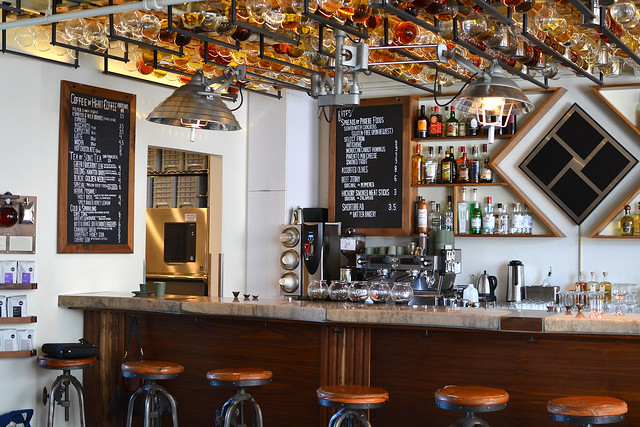
The Navy Gimlet
Jennifer's self-proclaimed greatest concoction is a blend of three ingredients: lime, sugar and gin.
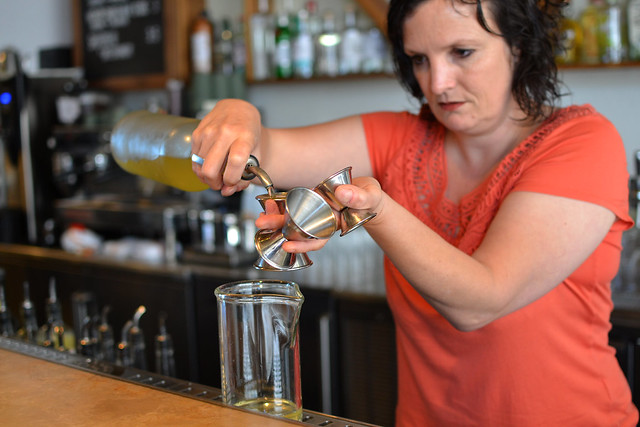
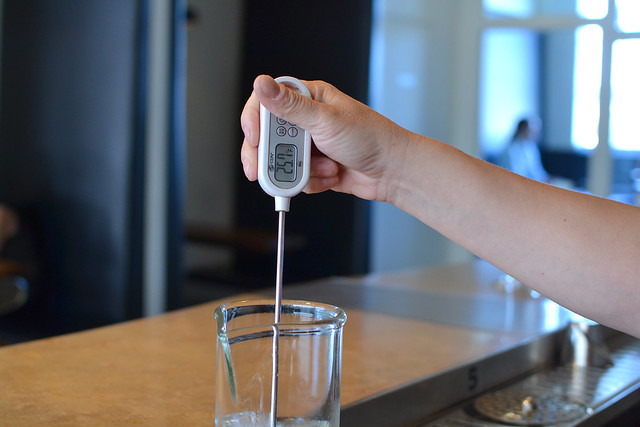
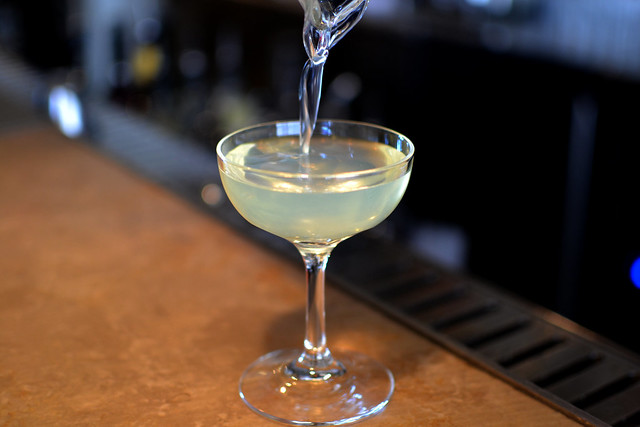

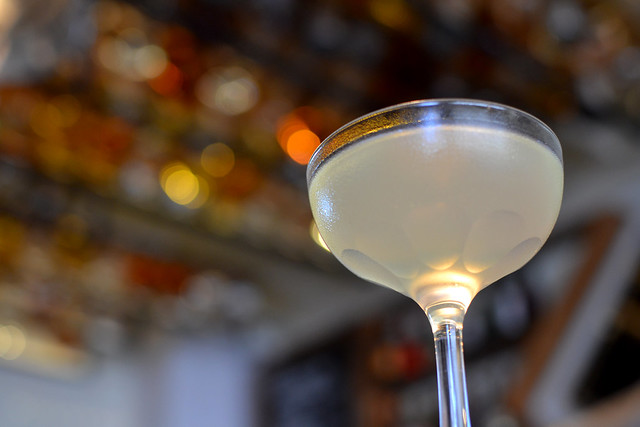
The Old Fashioned
Family: Cocktail Spirit: Whiskey Glass: Old-Fashioned Garnish: Orange Twist
0.25 oz Small Hand Foods Gum Syrup 2 oz bourbon (The Interval uses Buffalo Trace or Wild Turkey 101 bourbon) 2 dashes Angostura bitters 3 dashes orange bitters
Stir everything over ice and strain into an old-fashioned glass over large ice. Garnish with an orange twist.
Oaxacan Old Fashioned
Original: Phil Ward, Death & Co., ca. 2008 Adaptation: Christine “Tiny” Delota, The Interval at Long Now, 2014 Family: Cocktail Spirit: Tequila Glass: Old Fashioned Garnish: Orange Twist
Shy 0.25 oz agave syrup 0.25 oz Ancho Reyes liqueur 0.5 oz mezcal (The Interval uses Xicaru) 1.5 oz reposado tequila (The Interval uses Suerte) 2 dashes chocolate bitters
Stir everything over ice and strain into an old-fashioned glass over large ice. Garnish with an orange twist.
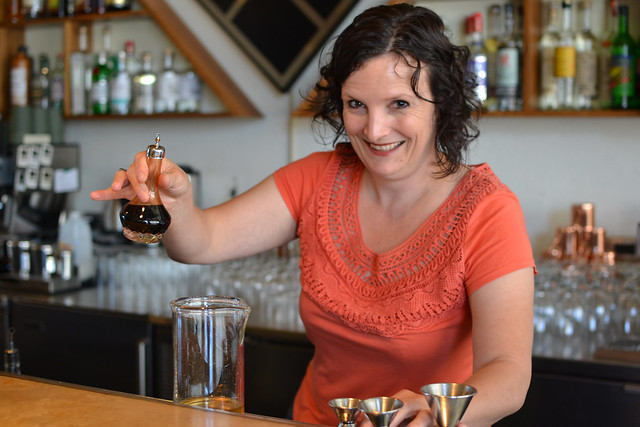
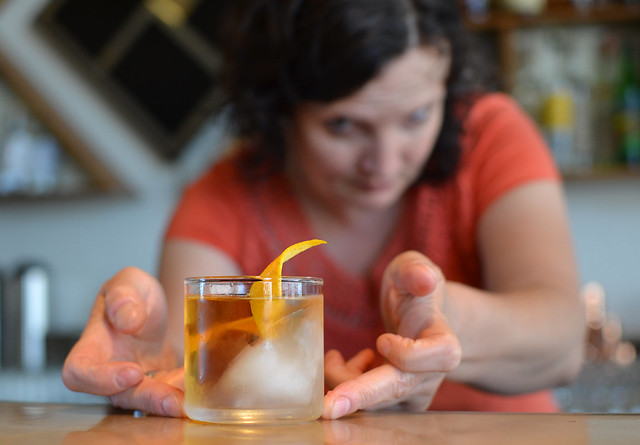
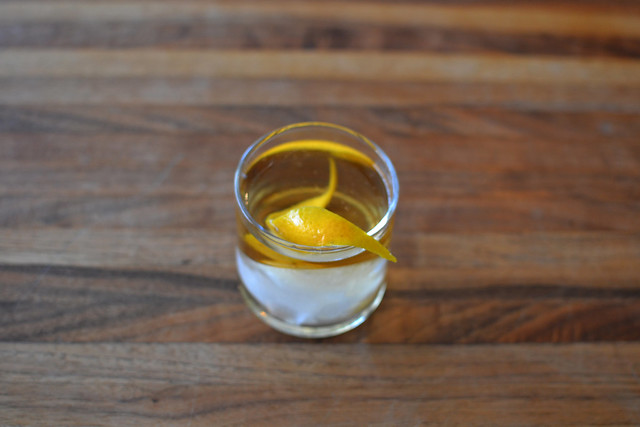
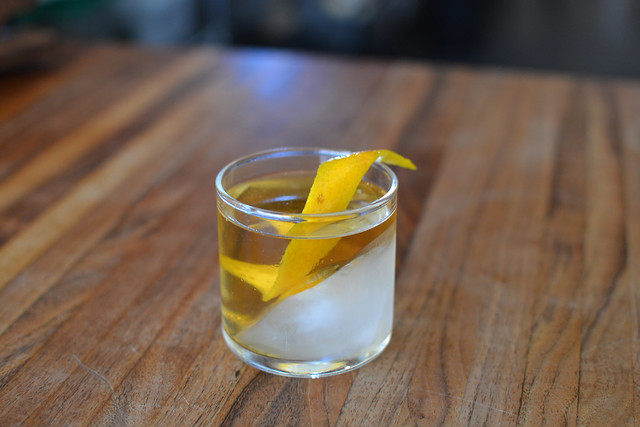
Mother-In-Law Cocktail
Family: Cocktail Spirit: Whiskey Glass: Old-Fashioned Garnish: None
26 oz Four Roses Yellow Label 1.5 oz Luxardo maraschino liqueur 1.5 oz Cointreau 1 oz 1:1 simple syrup 0.5 oz Bigallet China China 0.5 oz Peychaud’s bitters 0.5 oz Angostura bitters 3 oz filtered water
Mix everything together and stir well; decant into empty bottles. Store in freezer. To serve, pour over one ice cube.

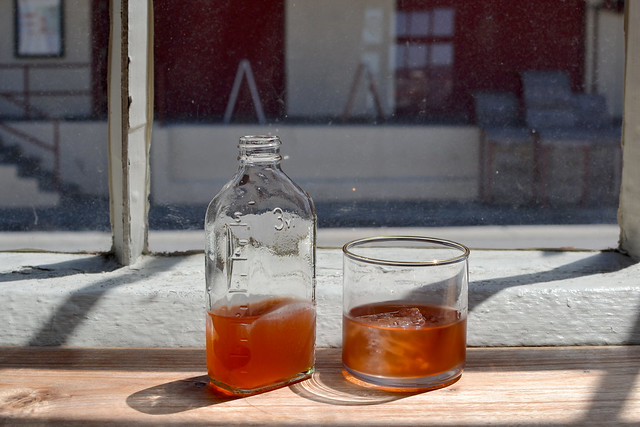
Thank you Jennifer for spending time with us. Always a pleasure!
All photos by Yoko Kumano

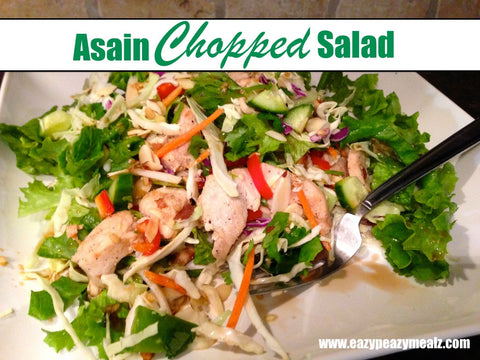
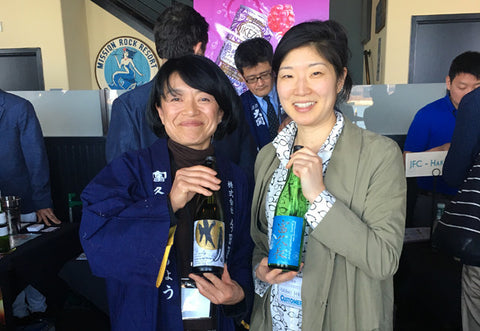

Comments (0)
There are no comments for this article. Be the first one to leave a message!